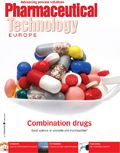Expansion plan
Pharmaceutical Technology Europe
In the current slow growth environment, service providers are looking to tactical expansions, as well as more ambitious strategic service expansions.
The variables that companies can manipulate to drive revenue growth are pretty straightforward: more customers, more projects, more services and higher prices. During the middle part of this decade, those variables were relatively easy to influence. Demand for contract development services soared as cheap money flowed from venture capitalists and public equity investors into early-stage pharmaceutical companies, and global bio/pharma companies spent lavishly to replenish their pipelines.

Jim Miller
However, things are not so easy anymore. In the current tight money and cost-conscious environment, there are fewer customers and fewer projects, and the surfeit of capacity relative to demand has precipitated a lot of price cutting. Service providers are engaged in fierce battles for market share to hold on to what they have and stay in the game until market conditions improve.
With opportunities limited in their traditional service segments, more service providers are trying to expand their service offerings. Some of this service expansion is tactical; that is, aimed at gaining a few more percent of the clients' development spend or at defending current revenue against more integrated service providers. Tactical expansions bolt on new service offerings contiguous to the contractor's existing offerings. They require a small expenditure for capital investment and staffing, and little additional sales effort because they are targeted at current customers. As a result, they entail limited business risk and limited upside. A common case in point these days is the addition of early-stage formulation services by contract manufacturers that offer process development and small-scale manufacturing service for APIs.
Strategic expansion
Strategic service expansions are far more ambitious. They involve a major investment in a new service area, typically through one or more acquisitions, where the objective is to quickly achieve critical mass in the service sector and have a major impact on the service provider's top and bottom line. Strategic expansions are often undertaken by companies that foresee slower growth in their current core service offerings, perhaps because they already have a substantial share of the market and see greater returns by investing in new service sectors. Strategic acquirers also have the financial wherewithal to make investments that will have a significant immediate impact on the company's prospects.
An important target area for strategic expansions of late has been drug discovery. The two market leaders in preclinical toxicology, Covance (NJ, USA) and Charles River Laboratories (CRL [MA, USA]), have placed major bets that drug discovery is the next great opportunity for contract services.
Covance has launched its expansion into drug discovery by buying major research operations from major pharmaceutical companies. In August, it acquired Merck's Gene Expression Laboratory, based in Seattle (WA, USA), which specializes in genomics services such as genotyping, gene sequencing and gene expression profiling. As part of the deal, Covance received a contract to provide genomic analysis services during the next 5 years for a total of $145 million. A year ago, Covance acquired the Greenfield (IN, USA) research facility of Eli Lilly. In that deal, Covance received a team of scientists experienced in late-phase discovery research, as well as advanced imaging technology that has become a major part of the discovery tool kit.
Covance's principal rival in the preclinical toxicology business, CRL is also expanding its discovery and imaging services business unit. In August, CRL acquired Cerebricon (Finland), a company that provides discovery services for therapies aimed at treating central nervous system diseases, for an estimated $9 million. Last year, CRL acquired MIR Preclinical Services (MI, USA), a provider of discovery services supported by in vivo imaging capabilities, and in April 2009 it picked up PPD's Piedmont Research Center, a provider of preclinical discovery services focused on oncology.
Manufacturing next?
The discovery services sector is somewhat unique because it is less penetrated by outsourcing than most development services (with the exception of medicinal chemistry). As we look ahead, we expect to see strategic service expansions into sectors where the fragmented market still presents opportunities to gain market share. One such sector is dose manufacturing: in a July conference call announcing its first half financial results, executives of API manufacturer Lonza (Switzerland) announced that the company has $1 billion available for acquisitions, and has targeted acquisitions in dose manufacturing as the next step in the commercial value chain. We may also see some deals in the analytical chemistry sector — although few companies there are large enough to make an impact on the performance of a strategic acquirer.
